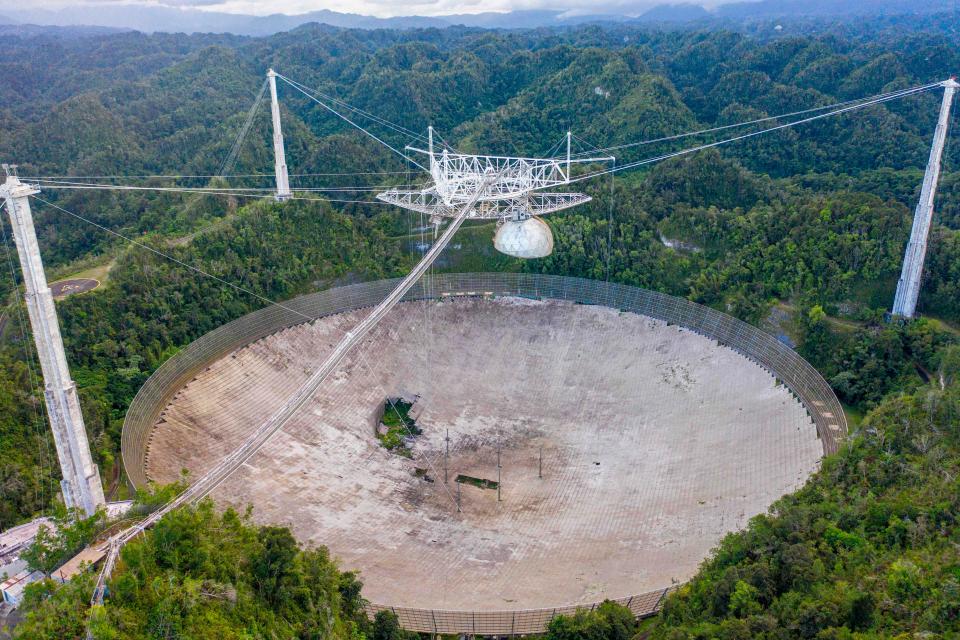Famed Puerto Rico radio telescope at Arecibo Observatory, hugely important to scientific research for more than 50 years, to be demolished
A massive radio telescope in Puerto Rico used by scientists worldwide will close, the National Science Foundation announced Thursday.
For 57 years, the telescope at the Arecibo Observatory has served as a world-class resource for radio astronomy, planetary, solar system and geospace research, and the search for extraterrestrial life, according to an NSF statement.
The foundation said the telescope structure is in danger of a catastrophic failure and its cables may no longer be capable of carrying the loads they were designed to support. In addition, any attempts at repairs could put workers in potentially life-threatening danger, the NSF said.
“This decision is not an easy one for NSF to make, but the safety of people is our number one priority,” said Sean Jones, the agency’s assistant director for the Mathematical and Physical Sciences Directorate. “We understand how much Arecibo means to this community and to Puerto Rico.”

An auxiliary cable broke in August and tore a 100-foot hole in the reflector dish and damaged the dome above it. Then on Nov. 6, one of the telescope's main steel cables snapped, causing further damage and leading officials to warn that the entire structure could collapse.
"Although it saddens us to make this recommendation, we believe the structure should be demolished in a controlled way as soon as pragmatically possible, " according to the engineering firm Thornton Tomasetti, which was hired to assess the telescope.
It is the end of one of the most iconic and scientifically productive telescopes in the history of astronomy – and scientists are mourning its loss, according to Nature magazine.
“I don’t know what to say,” Robert Kerr, a former director of the observatory, told Nature. “It’s just unbelievable.”
Ralph Gaume, director of NSF’s astronomy division, said the agency wants to preserve other instruments at the site, as well as the visitor and outreach center, according to Science magazine.
The telescope was built in the 1960s with money from the Defense Department amid a push to develop anti-ballistic missile defenses. In its 57 years of operation, it endured hurricanes, endless humidity and a recent string of strong earthquakes.
For many years it was the main instrument involved in listening for messages from extraterrestrial civilizations, and its striking looks won it a supporting role in feature films, Science magazine said.
The telescope boasts a 1,000-foot-wide dish, which was featured in the Jodie Foster film "Contact" and the James Bond movie "GoldenEye."
The announcement saddened many beyond the scientific world, with the hashtag #WhatAreciboMeansToMe popping up on Twitter along with pictures of people working, visiting and even getting married or celebrating a birthday at the telescope.
There is no estimate yet on the cost of decommissioning the telescope, according to Nature magazine.
Contributing: The Associated Press
This article originally appeared on USA TODAY: Arecibo telescope in Puerto Rico to close; #WhatAreciboMeans trends

